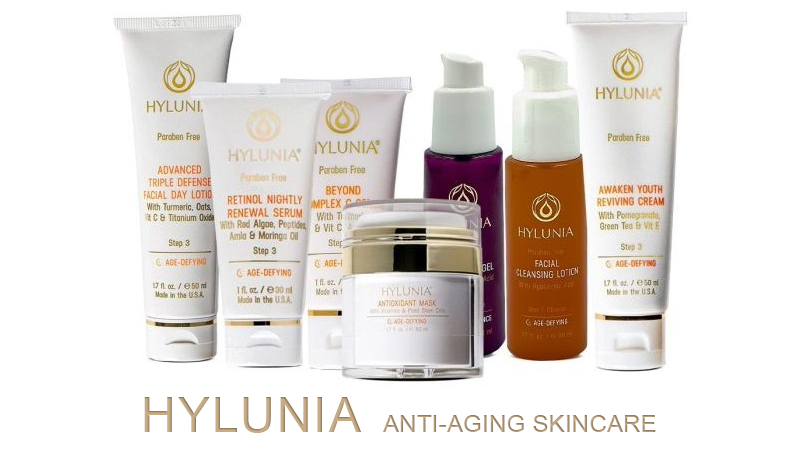
As the sun goes down, your skin shifts into repair mode, making nighttime the perfect window to fight wrinkles and sagging. During sleep, skin regenerates, shedding damaged cells and repairing itself. With a well-crafted anti-aging night routine, you can give your skin exactly what it needs to stay firm, smooth, and youthful-looking.
Contents
- Step 1: Start with a Gentle Cleanser
- Step 2: Apply a Targeted Treatment Serum
- Step 3: Use a Hydrating Serum to Lock in Moisture
- Step 4: Lock It All in with a Nourishing Night Cream
- Step 5: Don’t Forget the Eye Cream
- Step 6: Incorporate Facial Massage for Extra Firmness
- Additional Tips for an Effective Anti-Aging Night Routine
Step 1: Start with a Gentle Cleanser
Your night routine begins with removing all the dirt, oil, and makeup that built up throughout the day. Leaving any residue can block your pores and prevent your skin from breathing, which may lead to dullness and breakouts. A gentle cleanser will do the trick without stripping your skin’s natural oils, keeping it balanced and ready for treatment.
Choosing the Right Cleanser
Look for cleansers that are free from sulfates, as these can be too harsh for aging skin. Instead, opt for formulas with hydrating ingredients like glycerin or aloe vera. Cleansers with low pH levels are also a good choice, as they help maintain the skin’s natural barrier, protecting it from moisture loss overnight.
Double Cleansing for Extra Freshness
If you wear makeup, consider starting with an oil cleanser to break down makeup and sunscreen, followed by a gentle foaming cleanser to remove impurities. This “double cleansing” method ensures that your skin is completely clean and ready to absorb anti-aging ingredients.
Step 2: Apply a Targeted Treatment Serum
Serums are the powerhouses of any anti-aging routine, packed with concentrated ingredients that penetrate deep into the skin. At night, it’s best to use a serum that targets wrinkles, sagging, and other signs of aging, so it can work its magic while you sleep.
Retinol: The Gold Standard for Anti-Aging
Retinol, a vitamin A derivative, is one of the most effective ingredients for reducing wrinkles and improving skin texture. It accelerates cell turnover, helping to reveal fresh, new skin, and promotes collagen production to keep skin firm. Start with a lower concentration if you’re new to retinol, as it can cause irritation in some skin types. Apply a pea-sized amount to your face, avoiding the eye area, and let it absorb before moving on to the next step.
Alternative Ingredients for Sensitive Skin
If retinol feels too strong for your skin, consider bakuchiol or peptides. Bakuchiol is a plant-based alternative that offers similar benefits without the irritation, while peptides are amino acids that help strengthen the skin’s structure and boost collagen. These ingredients are gentler but still effective, making them great for sensitive or retinol-intolerant skin.
Step 3: Use a Hydrating Serum to Lock in Moisture
Hydration is key to keeping wrinkles and sagging at bay. A hydrating serum layered on top of your treatment serum will help attract moisture to your skin and maintain its plumpness overnight. Look for serums with hyaluronic acid, which can hold up to 1000 times its weight in water, as well as glycerin and panthenol for extra hydration.
Layering Your Serums
When layering serums, always start with the thinner consistency first. Apply your anti-aging treatment serum, let it absorb, and then follow up with a hydrating serum. This ensures that each layer penetrates effectively, maximizing the benefits of each product.
Tips for Maximum Absorption
Applying serums on slightly damp skin can enhance absorption, so try misting your face lightly before applying your hydrating serum. This way, the ingredients can bind to water, increasing their effectiveness and keeping your skin plump throughout the night.
Step 4: Lock It All in with a Nourishing Night Cream
A rich night cream is essential to seal in moisture and keep your skin hydrated as you sleep. Unlike daytime moisturizers, night creams are thicker and contain ingredients that help repair and rejuvenate your skin. Look for creams with ingredients like ceramides, which strengthen the skin barrier, and fatty acids, which provide deep hydration.
Choosing an Anti-Aging Night Cream
Look for a night cream that’s specifically formulated for anti-aging, containing ingredients like peptides, squalane, or niacinamide. These ingredients work to hydrate, smooth, and firm the skin, helping it look and feel rejuvenated by morning.
The Benefits of Sleeping Masks
Sleeping masks, or “overnight masks,” are another option if you want an extra hydration boost. These thicker treatments can be used in place of a night cream a few times a week to help lock in moisture even more effectively. They work as a final layer to prevent water loss and give your skin an added dose of nourishment.
Step 5: Don’t Forget the Eye Cream
The skin around your eyes is thinner and more delicate than the rest of your face, making it one of the first areas to show signs of aging. A good eye cream can help reduce the appearance of crow’s feet, puffiness, and dark circles, giving your eyes a refreshed look.
Eye Cream Ingredients to Look For
For anti-aging, look for eye creams that contain peptides to support collagen, hyaluronic acid for hydration, and caffeine to reduce puffiness. Apply a small amount around the orbital bone, gently tapping with your ring finger to avoid tugging on the delicate skin.
Using Eye Masks for an Extra Boost
If your eyes need some extra TLC, consider using eye masks once or twice a week. These patches are infused with concentrated ingredients and can work wonders for hydrating and tightening the skin around your eyes. Just pop them on for about 10-15 minutes before bed for a refreshed look by morning.
Step 6: Incorporate Facial Massage for Extra Firmness
Facial massage is a relaxing and effective way to improve blood flow, stimulate collagen production, and give your skin a more lifted appearance. Massaging your face before bed can also help release tension in your facial muscles, which can contribute to wrinkle formation over time.
How to Perform a Simple Facial Massage
Using clean hands or a facial roller, gently massage your face in upward and outward motions. Focus on areas prone to sagging, like the jawline, cheeks, and forehead. Spend a few minutes each night on this step to help tone and lift your skin over time.
Using Gua Sha or Jade Rollers
Gua sha tools and jade rollers are popular for facial massage because they’re easy to use and feel cool on the skin. These tools can help drain lymphatic fluid, reduce puffiness, and give skin a natural glow. Just remember to use a facial oil or serum with your tool to avoid tugging on the skin.
Additional Tips for an Effective Anti-Aging Night Routine
In addition to your skincare products, there are a few more tricks to enhance your nighttime routine and support your skin’s health.
Use a Silk Pillowcase
Silk pillowcases create less friction than cotton, reducing skin tugging that can lead to wrinkles. They’re also less absorbent, meaning your products stay on your face instead of getting absorbed by your pillow.
Get Enough Quality Sleep
Your body repairs itself during sleep, so make sure you’re getting enough shut-eye. Aim for 7-9 hours a night to allow your skin time to recover and renew. Quality sleep supports overall skin health, helping you wake up looking fresh and rejuvenated.
Building an anti-aging night routine is about consistency and patience. By giving your skin what it needs each night, you can combat wrinkles, sagging, and other signs of aging effectively. With the right products and a few relaxing techniques, you’ll set the stage for healthier, firmer skin by morning.

